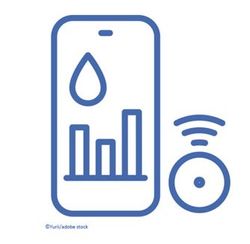© 2025 MJH Life Sciences™ , Patient Care Online – Primary Care News and Clinical Resources. All rights reserved.
Intensive SBP Reduction Below 120 mm Hg Reduces MACE in Adults with Type 2 Diabetes
AHA 2024. Findings from the BPROAD trial help fill a gap left by similar studies on the ideal target SBP for adults with type 2 diabetes, said study authors.
In adults with type 2 diabetes (T2D) and hypertension, aged 50 years and older, intensive treatment to drive systolic blood pressure (SBP) to less than 120 mm Hg significantly reduced the incidence of major cardiovascular events (MACE) compared with standard treatment targeting SBP of less than 40 mm Hg, according to findings from the BPROAD trial.1
The study, presented at the American Heart Association (AHA) Scientific Sessions 2024, November 16-18, 2024, in Chicago, and simultaneously published in NEJM was conducted to determine effective BP targets in adults with T2D in the wake of previous studies, ie, ACCORD BP and SPRINT, which have generated conflicting results.1
BPROAD Methods
Led by Guang Ning, MD, PhD,a professor at Ruijin Hospital at Shanghai Jiao Tong University School of Medicine in Shanghai, China, the research team, from February 2019 through December 2021, enrolled a cohort of 12 821 adults from 145 sites in China, all of whom had elevated SBP, T2D, and an increased risk of cardiovascular disease. The group had a mean age of 64 years and approximately 45% were women. Per study protocol, the criteria for elevated SBP was 140 mm Hg or greater untreated with antihypertensive medications or 130 mm Hg or greater while taking 1 or more antihypertensive medication.1
According to the study, mean SBP at study baseline was 140 mm Hg and mean HbA1C was 7.6%; 23% of participants had a history of clinical CVD at baseline, and more than two-thirds (65%) were taking statin therapy.
Participants were randomly assigned to receive either intensive treatment to reduce SBP to less than 120 mm Hg (n = 6414) or standard treatment targeting a systolic BP of less than 140 mm Hg (n = 6407) for up to 5 years. The study’s primary outcome was a composite of nonfatal stroke, nonfatal myocardial infarction (MI), treatment or hospitalization for heart failure (HF), or CV death.1
Findings
After 1 year of treatment, mean SBP was markedly lower in both treatment groups. Ning and colleagues reported a mean SBP of 121.6 mm Hg (median, 118.3) in the intensive treatment group and of 133.2 mm Hg (median, 135) in the standard treatment group.1
Over a median follow-up of 4.2 years, the composite outcome was observed in 393 participants (1.65% per year) in the intensive-treatment group and 492 participants (2.09% per year) in standard-treatment group, translating to 21% reduction in risk for MACE among the former group (HR, 0.79; 95% CI, 0.69 - 0.90; P <.001).
Among the components of the composite outcome, the greatest reduction in risk was reported for HF treatment or hospitalization: 0.13% vs. 0.19% per year (HR 0.66, 95% CI 0.41-1.04). In order of magnitude of risk reduction, other secondary outcomes for intensive vs standard treatment at the 5-year follow-up were1:
- CV death: 0.24% vs. 0.32% per year (HR 0.76, 95% CI 0.55-1.06)
- Fatal or nonfatal stroke: 1.19% vs. 1.50% per year (HR 0.79, 95% CI 0.67-0.92)
- Fatal or nonfatal MI: 0.28% vs. 0.33% per year (HR 0.84, 95% CI 0.60-1.16)
Ning and colleagues observed no significant differences in the incidence of serious adverse events between the two groups but did report more frequent symptomatic hypotension and hyperkalemia among participants who received intensive vs standard treatment.
"These findings provide strong support for a more intensive systolic BP target in people with type 2 diabetes for the prevention of major cardiovascular events," Ning said in an AHA press statement.2
According to Ning, the study results are consistent with findings from the SPRINT study of adults with elevated SBP but without diabetes, which found a significant 27% reduction in the incidence of cardiovascular diseases. "Future clinical practice guidelines will hopefully consider these results when making recommendations for BP targets for people with type 2 diabetes," he said in the statement. "Beneficial future research could focus on profiling those with the largest benefit and the lowest harm in an intensive BP treatment group."2
Among the study’s limitations the authors point to marked difference in diastolic BP between groups, which could impact "the independent effect of systolic BP on trial outcomes." Additionally, the findings may not be generalizable to people of other ethnic populations or to populations with characteristics different from the participants, researchers said.
Amit Khera, MD, professor, department of internal medicine, UT Southwestern Medical Center, moderated the AHA press conference where the study findings were announced, stated, “The BPROAD study just filled a key gap in our knowledge about lower blood pressure, particularly if this concept applies to patients with diabetes. The answer is definitively yes. Now we have to work towards implementing these important findings into millions of individuals worldwide with diabetes.”


